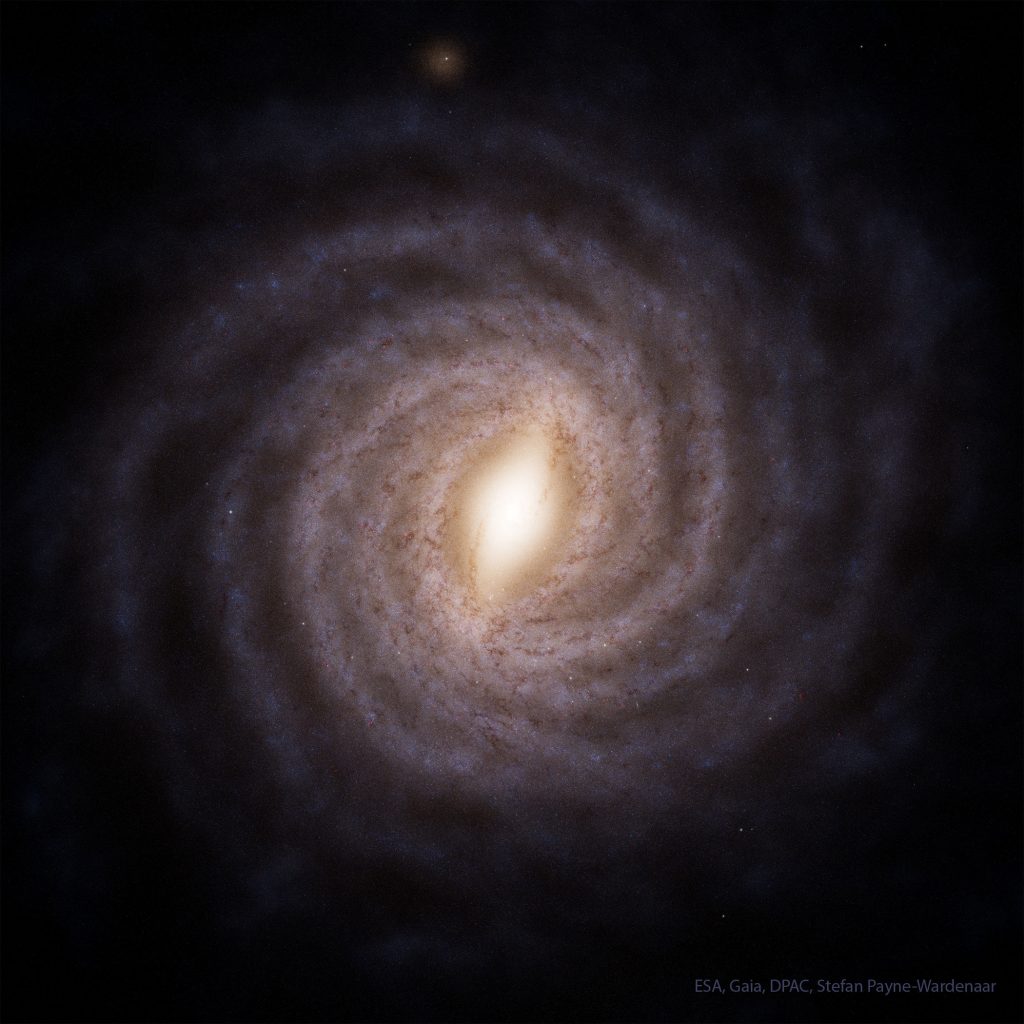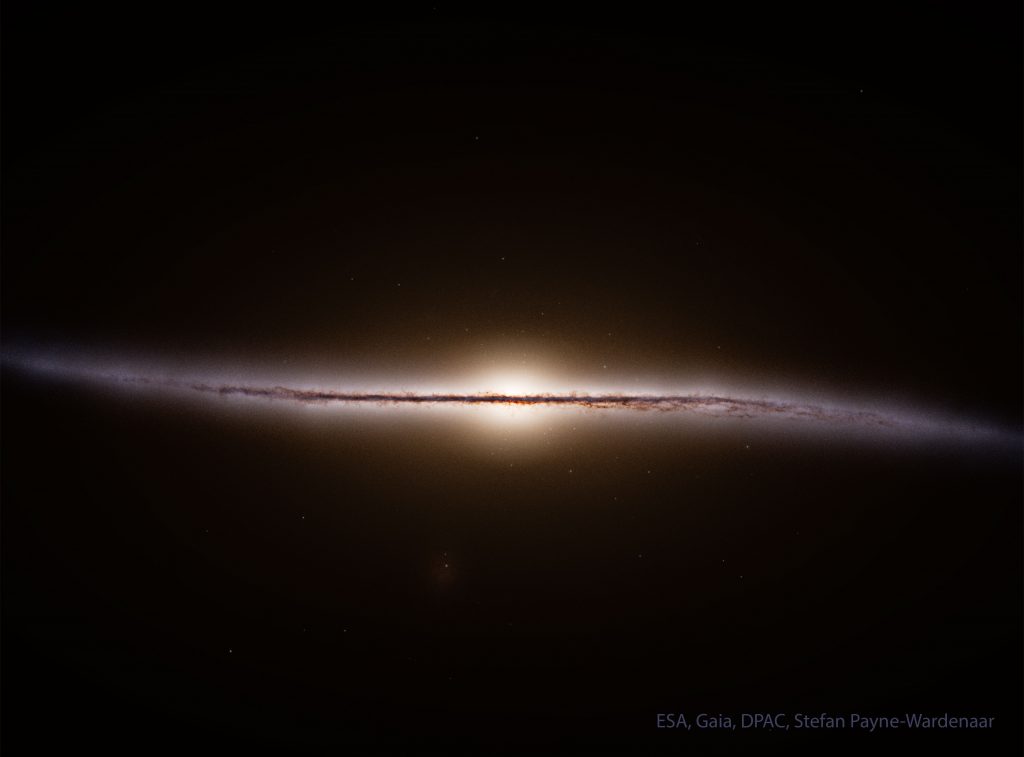Advances in astronomy can rewrite even introductory textbooks. Although no spacecraft have yet exited our Milky Way galaxy to image it from the outside, the Gaia astrometry space telescope recently completed a dozen years of accurately measuring the positions, distances, and motions of billions of Milky Way stars from a Lissajou orbit about the Earth–Sun L_2 Lagrange point. This data confirmed the Milky Way’s barred, warped, wobbly, spiral disk shape, as in the reconstructions below. A collision with a smaller galaxy may have caused the warp and wobble.

Gaia space telescope reconstruction of the Milky Way, top view. (ESA, Gaia, DPAC, Stefan Payne-Wardenaar.)

Gaia space telescope reconstruction of the Milky Way, side view. (ESA, Gaia, DPAC, Stefan Payne-Wardenaar.)

Thanks, Mark! I enjoy reading your posts as well.